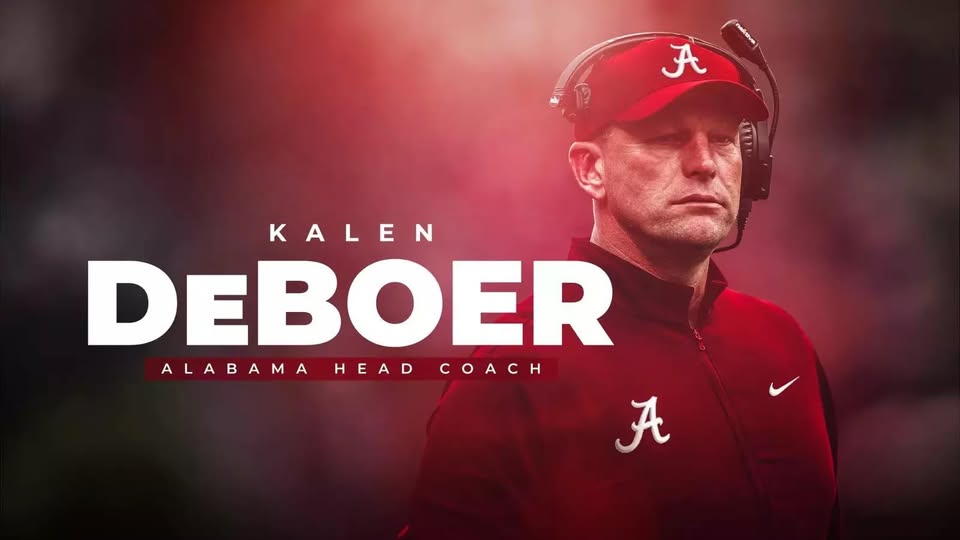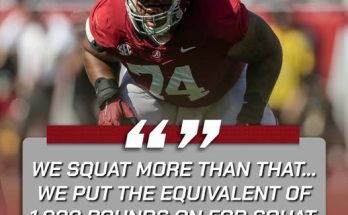In an era when college football’s transfer portal spins with dizzying speed, Alabama has managed to do the unthinkable: hold firm. As the spring transfer window closed, the Crimson Tide emerged as the only team in the Southeastern Conference that didn’t lose a single scholarship player. Not one defection. Not one public sign of unrest. Not one name entered the portal from a program that has seen more than its share of turmoil over the past year.
This rare feat comes amid a time of dramatic transition in Tuscaloosa. The 2025 offseason has been defined by one thing above all else: change. Nick Saban’s retirement in January marked the end of an era. In came Kalen DeBoer, fresh off leading Washington to the national championship game. Many wondered how Alabama would handle the uncertainty. How would players respond to a new head coach? How would the culture shift? Would there be an exodus of talent?
Instead, Alabama has presented a picture of stability that no other SEC program can match this spring. While Georgia, LSU, Tennessee, and others have each seen several scholarship athletes test the portal waters, DeBoer and his new staff have somehow kept the roster intact. It’s not just a mild surprise—it’s a statement.
The news stands in stark contrast to what’s happening across the rest of the conference. The spring window, which ran from April 16 through April 30, opened the floodgates across the nation. This period, now a staple of the modern college football calendar, allows players to reassess their situations after spring practice—often leading to mass movement. According to 247Sports and On3, dozens of SEC players have already jumped in. But not one from Alabama.
What makes this even more impressive is that Alabama is operating under new leadership at nearly every major coaching position. DeBoer brought several key assistants with him from Washington, including offensive coordinator Ryan Grubb and strength coach Ron McKeefery. These changes usually cause some initial friction. But in Tuscaloosa, the buy-in has been near total.
“People expected a lot of guys to leave once Coach Saban stepped down,” said one veteran player who chose to remain anonymous. “But the energy here has been great. DeBoer and the staff are about building on what was already here. It’s different—but it still feels like Bama.”
There were certainly reasons to think Alabama might bleed talent. With Saban’s departure, the program’s aura of invincibility took a hit. High-profile players could’ve chased NIL opportunities elsewhere. Others could’ve followed assistants or simply looked for more playing time. But none of that happened.
This retention has massive implications. First, it suggests that DeBoer and his staff were able to build trust quickly. In modern college football, relationships matter as much as schemes. The fact that the entire roster of scholarship athletes stayed put speaks volumes about how the new staff approached their transition period.
Second, it gives Alabama a roster continuity edge that most SEC teams would envy. While their competitors must reshuffle depth charts and replace players who left unexpectedly, Alabama can build directly on its spring practices. The playbook install, team chemistry, and positional battles will all benefit.
Third, it suggests that Alabama’s players still believe they can win—and win big. There’s no other reason to stick around in a college football world where the transfer portal often promises easier paths to playing time or bigger NIL paydays. The only explanation is that players see something special brewing.
Kalen DeBoer himself has acknowledged the importance of roster retention. While he’s not one to publicly gloat, the coach has subtly praised the culture he inherited—and what he hopes to enhance.
“This is a special place,” DeBoer said earlier this spring. “The standard here is different, and the guys have bought in. We’re not focused on what’s happening anywhere else. We’re focused on building something great together.”
That internal cohesion is quickly becoming part of the program’s new identity. In many ways, DeBoer is proving that Alabama’s foundation runs deeper than any one man—even Nick Saban. Of course, Saban built the machine. But it appears the machine can keep humming, at least for now.
Some may argue that the lack of transfers could be a product of circumstance—perhaps Alabama didn’t have many players at risk of leaving. But that argument doesn’t hold up under scrutiny. Alabama’s roster is filled with former blue-chip recruits, including highly touted backups and underclassmen who could easily find bigger roles elsewhere. Several of them were widely viewed as potential portal candidates before spring practice began. Yet none left.
In fact, Alabama did lose several key players to the portal after the 2023 season and during the winter window—including quarterback Jalen Milroe and defensive back Kool-Aid McKinstry, both of whom pursued NFL dreams. But when it came to the spring exodus? Silence.
It’s worth noting that Alabama did add players from the transfer portal this offseason, including some immediate-impact names. Wide receiver Germie Bernard followed DeBoer from Washington. Safety Keon Sabb transferred in from Michigan. The net effect is a roster that looks stronger—not weaker—after the spring period.
The significance of this cannot be overstated in a league as competitive as the SEC. Every team is hunting for an edge, and roster churn has become both a blessing and a curse. Programs like Ole Miss and Florida have turned to the portal as a lifeline. Others, like Arkansas and South Carolina, are trying to rebuild on the fly after losing top contributors. But Alabama? They’ve managed to keep their core intact.
This spring retention also speaks to the power of institutional branding. Alabama football remains one of the most attractive programs in the country. That brand didn’t disappear when Saban left. If anything, it appears to have helped DeBoer build instant credibility with players and recruits alike.
It’s also possible that the NIL infrastructure in Tuscaloosa is beginning to quietly pay dividends. While Alabama doesn’t typically lead national headlines when it comes to NIL deals, the Crimson Tide’s support system—boosters, collectives, and business partnerships—may be stronger than it appears. For players weighing the pros and cons of leaving, those behind-the-scenes assurances can matter.
As other SEC teams now scramble to retool their rosters, Alabama’s coaching staff can go full throttle into preparation for the 2025 season. With no unexpected departures, every position group can move forward with clarity. Competition will be fierce, but it will be internal—without the disruption of mass turnover.
Of course, Alabama still faces plenty of challenges. The schedule is brutal. The standard is high. And for DeBoer, the pressure to follow in Saban’s footsteps remains enormous. But for now, he’s accomplished something that no other coach in the conference has: holding the line.
That alone is a massive win.
There are plenty of lessons to draw from Alabama’s spring portal success. In a college football world increasingly shaped by short-term decisions, the Crimson Tide have shown that loyalty, culture, and vision still matter. That you can embrace the new era without losing your identity. That change doesn’t have to mean chaos.
It’s only April, and championships aren’t won in the spring. But Alabama’s clean sheet in the portal is an early sign that DeBoer has something real brewing in Tuscaloosa. No transfers. No panic. Just business as usual—Bama style.
And in the ever-changing landscape of college football, that may be the most impressive thing of all.



